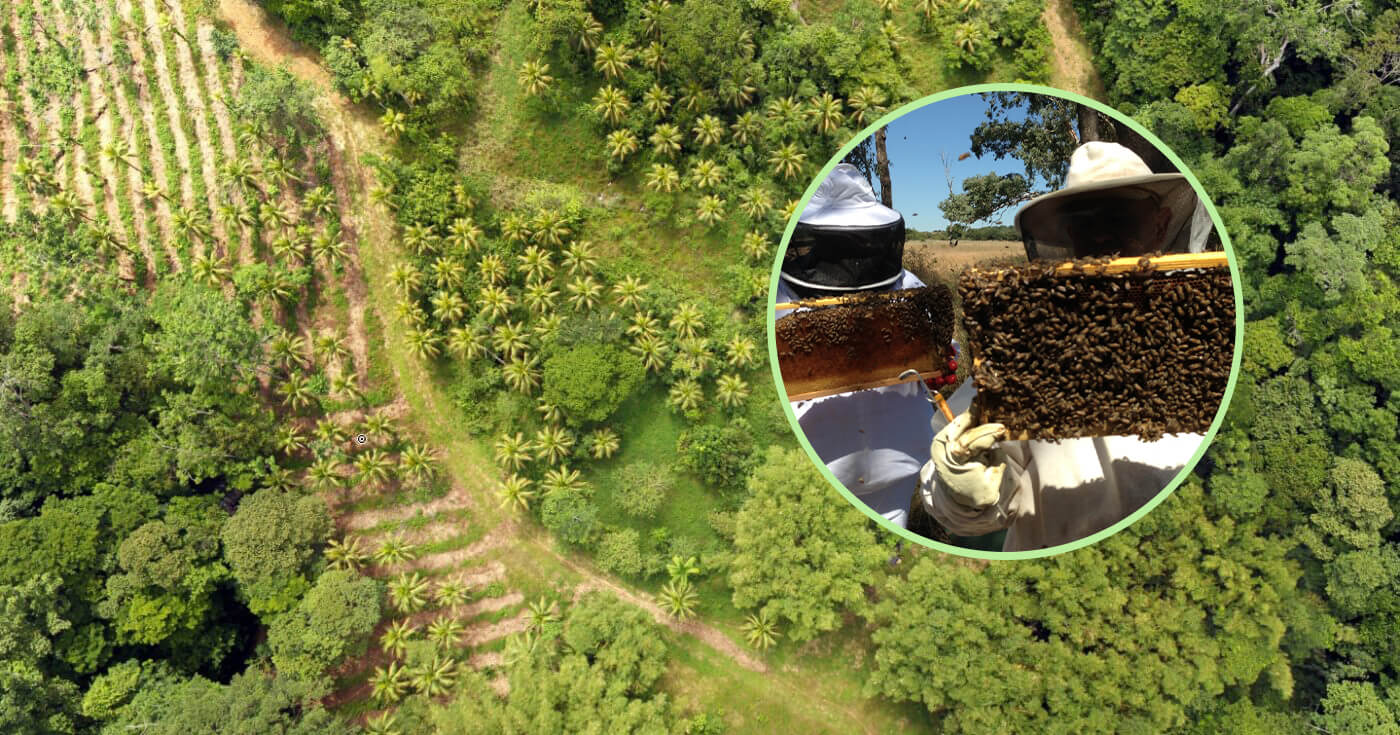
Rural poverty and inequality continue to be major challenges for sustainable development, particularly in developing countries where most of the poor reside in rural areas and depend on agriculture for their livelihoods. Limited access to markets, low agricultural productivity, climate change, and environmental degradation are just a few factors contributing to the perpetuation of poverty in these areas. To reduce poverty and achieve sustainable development, rural communities need to diversify their income sources, increase their resilience, and improve their social inclusion.
Agroforestry and beekeeping are two promising practices that can help rural households diversify their income sources and reduce poverty. Agroforestry is the integration of trees and shrubs with crops and livestock systems, while beekeeping is the management of honey bees for honey production and pollination services. Both practices can offer multiple benefits for rural households, such as:
- Increasing crop yields and quality: Trees and shrubs can improve soil fertility, water retention, pest control, and microclimate, while bees can enhance crop pollination and fruit set. For example, a study in Malawi and Zambia found that planting fertiliser trees such as Gliricidia alongside maize increased maize yields by up to 400 percent. Another study in Kenya found that beekeeping increased coffee yields by 17 percent.
- Diversifying income sources and products: Trees and shrubs can provide additional products such as fruits, nuts, timber, fuelwood, fodder, medicine, and gum, while bees can produce honey, wax, propolis, pollen, and royal jelly. For example, a study in Ethiopia found that agroforestry increased household income by 18 percent. Another study in Uganda found that beekeeping increased household income by 33 percent.
- Reducing vulnerability and risk: Trees and shrubs can reduce soil erosion, landslides, floods, droughts, and carbon emissions, while bees can pollinate wild plants and enhance biodiversity. A study in Tanzania found that agroforestry reduced the exposure of maize farmers to drought by 25 percent. Another study in India found that beekeeping reduced the vulnerability of cotton farmers to pest outbreaks.
- Enhancing social inclusion and empowerment: Trees and shrubs can provide shade, shelter, recreation, and aesthetic value, while bees can provide education, recreation for rural communities. A study in Ghana found that agroforestry increased women’s participation in household decision-making by 15 percent. Another study in Nepal found that beekeeping increased women’s empowerment by 21 percent.
To realize the potential of agroforestry and beekeeping for diversifying income sources and reducing poverty, rural households need to overcome some challenges and constraints, such as:
- Lack of knowledge and skills: Rural households may not have adequate knowledge and skills on how to practice agroforestry and beekeeping effectively and efficiently. They may also lack access to information and extension services that can provide them with technical guidance and support. A study in Nigeria found that lack of knowledge and skills was the main reason for low adoption of agroforestry among farmers. Another study in Kenya found that lack of training was the main constraint for beekeeping among women.
- Lack of inputs and resources: Rural households may not have sufficient inputs and resources to practice agroforestry and beekeeping successfully. They may lack access to quality seeds, seedlings, saplings, bees, hives, equipment, and tools. They may also lack access to land, water, credit, and insurance that can enable them to invest in these practices. In Rwanda found that lack of inputs and resources was the main barrier for agroforestry adoption among farmers. Another study in Ethiopia found that lack of land and credit was the main challenge for beekeeping among women.
- Lack of markets and incentives: Rural households may not have adequate markets and incentives to practice agroforestry and beekeeping profitably. They may face low demand, low prices, high transaction costs, poor infrastructure, weak institutions, and unfair competition for their products. They may also face unfavorable policies, regulations, subsidies, and taxes that discourage them from adopting these practices. A study in Zambia found that lack of markets and incentives was the main obstacle for agroforestry adoption among farmers. Another study in Tanzania found that lack of market access was the main problem for beekeeping among women.
To address these challenges and constraints, rural households need to be supported by various actors and stakeholders, such as:
- Government agencies: Government agencies can create an enabling environment for agroforestry and beekeeping by providing favorable policies, regulations, subsidies, taxes, and incentives. They can also provide public goods and services such as research, extension, education, infrastructure, health, and security that can facilitate these practices. The government of Malawi has promoted agroforestry through its Farm Input Subsidy Programme (FISP) that provides subsidized fertiliser trees to farmers. The government of Ethiopia has supported beekeeping through its Honeybee Development Strategy (HBDS) that provides policy guidance and coordination for the sector
- Non-governmental organizations: Non-governmental organizations can provide technical assistance, training, capacity building, and advocacy for agroforestry and beekeeping. They can also link rural producers with markets, buyers, and value chains, and support the development of producer organizations, cooperatives, and networks.
- Private sector: The private sector can invest in agroforestry and beekeeping by providing financing, inputs, equipment, and technology, and by creating value-added products and services. They can also engage in corporate social responsibility initiatives that benefit rural communities and the environment.


















